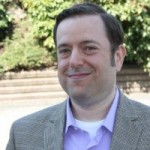The future of tablets isn’t what analysts thought a year ago, or even last fall.
The market for PCs continues to decline (but at a slowing rate: IDC, Gartner), yet tablet growth is also slowing forcing many analysts to scale back their forecasts. Smartphone growth is slowing as well.
There is a lot of discussion, mainly from an investor point of view about why: saturation, price points, supplier market share, etc., that are relevant for both business and consumer markets. Recently the focus has been on iPads because of Apple’s earnings call but the trend is not limited to Apple.
Why aren’t tablets taking more share away from PCs?
Given the phenomenal growth of tablets the last few years, their computing power, and the large overlap of general use cases shared with PCs (email, browsing) it did seem that tablets were on track replace PCs in large numbers. But the use case overlap was not large enough to support the forecasts. Tablets are tweeners, fighting for space between the superior communications of smartphones and greater productivity of PCs. Being in the middle is not normally a desirable spot for a product, but tablets excel at information and entertainment consumption and this middle is a pretty big and happy place to be.
What do we use PCs for? For years we have been using PCs for some combination of productivity, information / entertainment consumption, and communication. PCs were largely designed and most useful for productivity, whether business or personal, and that’s why we bought them. As PCs evolved and became capable and appealing for information/entertainment consumption and communication we bought more of them. And at some point whatever motivated us to buy a PC, our actual use of them flipped – we now spend a higher percentage of time using our PCs for information / entertainment consumption and communication than we do for productivity. And of course this is the domain of tablets and why they have taken as much of the PC market as they have.
But tablets are simply not as good as PCs for a large number of productivity applications. Until they are this will act as a governor on tablet growth and allow for a shrinking but still large market for PCs.
In The iPad Is a Tease Jean-Louis Gassée points out that:
So far, Apple’s bet has been to keep the iPad simple, rigidly so perhaps, rather than creating a neither-nor product: No longer charmingly simple, but not powerful enough for real productivity tasks. But if the iPad wants to cannibalize more of the PC market, it will have to remove a few walls.
I would say Gassée’s post is from the point of view of a user who would like to replace his PC with an iPad but can’t, that this is a larger cohort than enterprise users or even power users, and that this is the best way to think about the productivity penalty portion of slowing iPad sales.
What would make a significant dent in the iPad’s productivity penalty? Microsoft Office support alone is necessary but not sufficient. A better solution for text entry than accessory keyboards, smooth and rapid app switching, and easy file access would each make a big difference. See below for links to other thoughts.
There is also a maddening and ironic side effect of using iPads for industry applications where they are productivity enhancers. For example, I used to be able to choose between an iPad (mostly research and entertainment) and a laptop (mostly work) for most trips, but a couple of my current projects include working with apps that only run on the iPad. I can’t be productive without having both an iPad and a laptop. Even in the office I often need both within reach. Unfortunately this situation is likely to get worse as more iOS, (and Android!) productivity apps appear.
Watch out for smartphones
Benedict Evans suggested another avenue for inquiry in a tweet:
.@asymco @gassee posit: slow iPad sales are worse news for the PC market: implies phones can take the greater share of PC use cases
— Benedict Evans (@BenedictEvans) April 21, 2014
I don’t know Benedict, but I picture him smiling devilishly as he composed that tweet. As well he should have.
The more types of computing devices there are the more complicated figuring out use case fit is going to be.
The future of tablets
The future of tablets seems promising in the near term since neither PCs nor smartphones can match their information and entertainment consumption experience and tablets will get better at aiding productivity. The better they get the more market share they’ll take. And of course we haven’t seen all the new industry apps where the tablet form factor and interface is a net productivity advantage.
On the other hand, the right kind of user interface – perhaps a high resolution holographic interface not dependent on form factors for projection – would free us from our quaint categories of PCs, tablets, smartphones, smartwatches, glasses, and be truly disruptive. Once computing power and user interfaces become independent of physical size all bets are off.
Further reading on iPad growth:
The iPad’s Curse — Ben Bajarin
iPads and Tablet Growth – Benedict Evans
Don’t Give up on the iPad – Ben Thompson
How Apple Could Continue to Own the Enterprise Tablet Market — Tim Bajarin
The Astonishing, Disappointing iPad – MG Siegler



